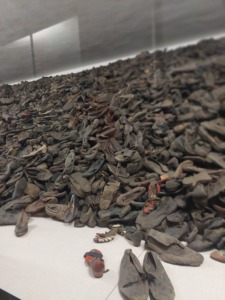Marilena Stegbauer is a 2023 McCain Global Leader from Germany. She is an impact litigation consultant based in London, UK. Focusing on persecuted minorities, she works on legal strategies and efforts to affect systemic and lasting change beyond the particular case involved. The European cohort of the 2023 McCain Global Leaders visited the Auschwitz-Birkenau Memorial and Museum as part of the cohort’s Changemaker Tour.
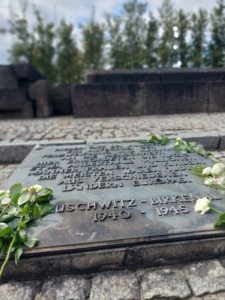
I had mixed feelings when I learned that the trip to Auschwitz would be part of the McCain Global Leader’s Changemaker Tour to Poland. A part of me did not want to return to the largest former German Nazi concentration and extermination camp I had visited 10 years prior as a 21-year-old on an ice-cold winter morning in January 2013. Before then, I had learned about WWII and the Holocaust, or “Shoah” in Hebrew, for several years in high school from textbooks and during an organized school trip to Natzweiler-Struthof during 8th grade, a Nazi labor camp located high up in the Vosges Mountains in France located merely 200 km southwest of my hometown across the border in Germany. I don’t remember much from that trip other than that my class consisted of crude and defiant teenagers with too much energy, driving our teachers mad during the curvy drive up to the camp through the snowy mountain slopes. In contrast, I remembered the journey home as a quiet one.
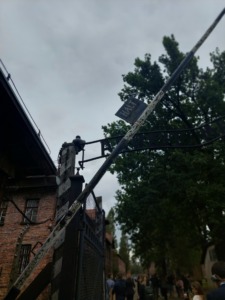
Even though I had been to Auschwitz before, preparing for an experience like this is impossible – It doesn’t matter if you go for the first or the 20th time. The finality of the destiny of those who arrived and were brutally murdered in this very place is all-consuming. The Nazi leadership and German government officials established Auschwitz as an answer to what they called the “Final Solution of the Jewish Question” (mass killing). As a result, 80% of Jews were killed on arrival at Auschwitz-Birkenau. That was if they had survived the train journey locked in without food, water, or access to basic sanitation for over a week. One witness-survivor recounts, “We expected the worst but not the unbelievable: gas chambers in the 20th century.” When the Red Army Soviet liberated Auschwitz on January 27, 1945 during the Vistula–Oder Offensive, more than 1 million had perished.
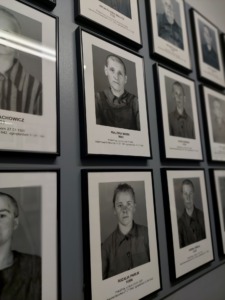
The atrocities carried out by the Nazis have been well-documented for current and future generations. Spanish-American philosopher George Santayana reminds us that preserving all evidence is critical as “those who do not remember the past are condemned to repeat it.” The Nazi regime had done a lot of this documentation work themselves, which is why they are frequently referred to as “Schreibtischtäter” (“desk perpetrators”). Ordinary professionals – from bureaucrats to technocrats and journalists to scientists – have played a crucial role in the commission of the Holocaust. Hannah Arendt portrayed one such Schreibtischtäter, Adolf Eichmann, and found him famously “banal.” Yet despite their centrality in the commission of the crimes, little is known about these cogs in the wheel of antisemitic hatred and violence. During the Nuremberg Trials, the prosecution frequently made reference to their bureaucratic thoroughness to prove their guilt beyond reasonable doubt and bring them to justice.
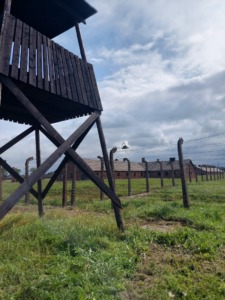
Part of the legacy and lessons learned from WWII and the Holocaust was the adoption of the UN Genocide Convention on December 9, 1948 by the UN General Assembly. The UN Genocide Convention is the first document that defined genocide and imposed obligations on states to prevent genocide and punish the perpetrators. Importantly, the Genocide Convention was to signify the commitment of states to the promise of “Never Again”, and it is this promise that I kept coming back to when I followed our guide first through the narrow lanes of Auschwitz and then over the vast green fields of Birkenau. Despite the promise, atrocity crimes are not a thing of the past but have been on the rise, especially against ethnic and religious minorities. The Convention grants states full discretion in relation to how they fulfil their duties under the Genocide Convention rendering the observation that the Genocide Convention is too weak to stand against the powers that bring about genocidal atrocities. Is “never again” just an empty promise, after all?
